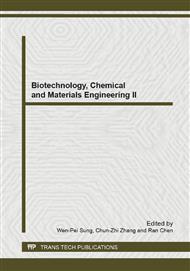p.654
p.666
p.675
p.684
p.693
p.701
p.712
p.717
p.721
Characterization of Synonymous Codon Usage Bias in the UL1 Gene of Duck Plague Virus
Abstract:
In this study, we calculated the codon usage bias in DPV CHv UL1 gene and performed a comparative analysis of synonymous codon patterns in UL1 of DPV CHv strain and other 19 reference herpesviruses. The results revealed that the synonymous codons with A and T at the third codon positon have widely usage in the codon of UL1 gene of DPV CHv. G + C compositional constraint was the main factor that determined the codon usage bias in UL1 gene. In addition, the codon usage bias of DPV CHv UL1 gene was compared with those of E. coli, yeast and human. There are 25 codons showing distinct usage differences between DPV and E. coli, 26 codons between DPV and yeast, and 21 codons between DPV and human. Therefore, the Human expression system is more suitable for heterologous expression of the DPV UL1 gene.
Info:
Periodical:
Pages:
693-700
Citation:
Online since:
January 2013
Authors:
Keywords:
Price:
Сopyright:
© 2013 Trans Tech Publications Ltd. All Rights Reserved
Share:
Citation:


